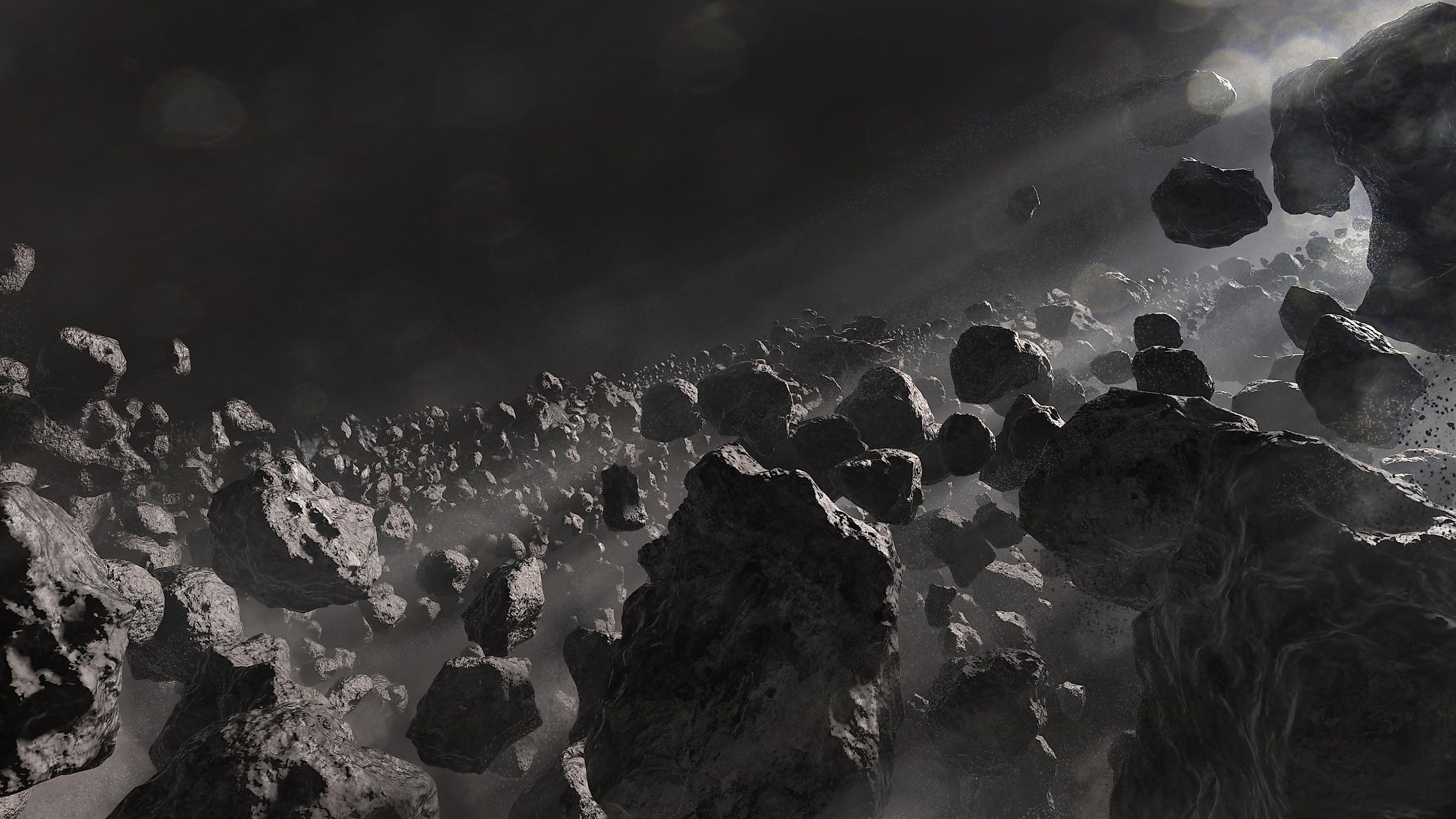
Kuiper Belt
Between the orbits of Mars and Jupiter, there exists a large band of asteroids called the Asteroid Belt, yet it is not the only region full of planetary debris. Beyond the orbit of Neptune in the far outer regions of the solar system is a region called the Kuiper Belt. The existence of the Kuiper Belt was first proposed in the 1940s and 1950s as an explanation for short-period comets. The first astronomer to predict the presence of the Kuiper Belt was Kenneth Essex in 1943, and it was also independently proposed by Gerard Kuiper (hence the name Kuiper Belt).
Astronomers were puzzled over where comets come from. They arrive from the outer solar system, approach the sun, and then head out towards the solar system's outermost regions. There are a large number of comets, and so they must come from somewhere. The existence of the Kuiper Belt was proposed as an explanation for comets whose orbital period is relatively short, a few decades to a hundred years. As it would later turn out, Pluto was the first object to be discovered in the Kuiper Belt, yet astronomers did not know this at the time. The existence of the Kuiper Belt was first confirmed in 1992 by astronomer David Jewitt with the discovery of an object far beyond the orbit of Neptune. Over the next few years, more objects would be discovered beyond the orbit of Neptune. Objects within the Kuiper Belt are known as Kuiper Belt Objects or KBO.
Formation Of The Kuiper Belt
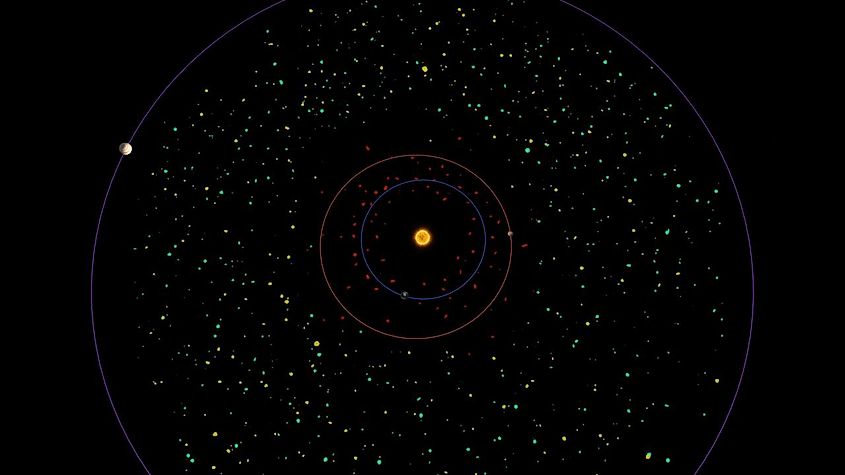
The Kuiper Belt likely formed soon after the planets came into existence. Eight planets emerged out of the protoplanetary disk around the sun, yet the solar system still contained a vast amount of planetary debris such as asteroids, comets, and meteors. Some of this debris fell into orbit between Mars and Jupiter and became the Asteroid Belt. Some collided with the planets during the era known as the Late Heavy Bombardment. However, an even larger amount of material was flung towards the far outer regions of the solar system. The gravitational pull of the gas giants was likely responsible for the formation of the Kuiper Belt, wherein the massive gravitational pull of these worlds slingshotted countless objects towards the outer solar system. Over time, enough material fell into orbit around the sun and formed a large disk of planetary debris. Although the Kuiper Belt and Asteroid Belt are similar in some ways, the objects within them are quite different. For example, asteroids tend to be composed of rock and metal, while KBOs tend to be made of various ices such as water, methane, and ammonia. Temperatures in the outer solar system are so cold that objects made of ice can exist for extended periods. Ever since its formation, most of the objects within the Kuiper Belt have remained there, and they will likely continue to stay there for many billions of years. Occasionally, however, the gravitational pull of Neptune causes some objects to fall towards the inner solar system, becoming what we know as short-period comets.
Mass And Size
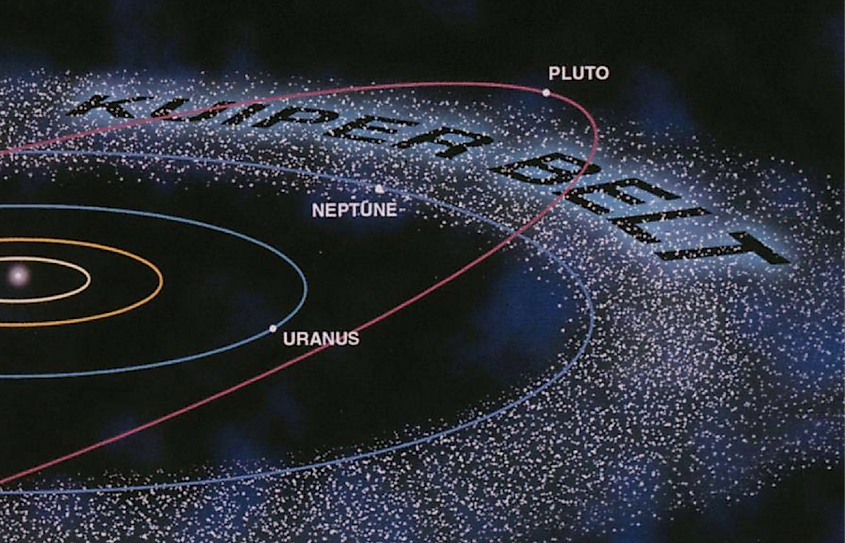
The exact size of the Kuiper Belt is not fully known, yet it is far larger than the Asteroid Belt. The Kuiper Belt is defined as starting just beyond the orbit of Neptune at 2.8 billion miles away (4.5 billion kilometers). It is generally believed to extend to about 4.7 billion miles away (7.5 billion kilometers). Thus, the entire Kuiper Belt extends over 1.9 billion miles (three billion kilometers). Determining the exact mass of the Kuiper Belt is complex, and as of yet, astronomers only have rough estimates. The Kuiper Belt is likely 20 to 200 times as massive as the Asteroid Belt. Even though the Kuiper Belt contains countless small objects, its mass is actually relatively low. In fact, the combined mass of everything in the Kuiper Belt is believed to be less than 1% of the Earth's mass.
Composition
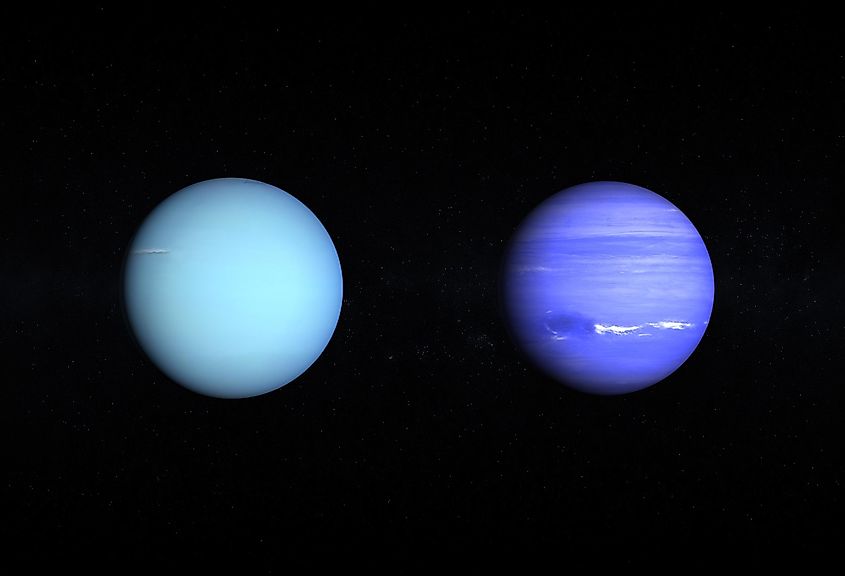
Although the Kuiper Belt and the Asteroid Belt are similar in some ways, they differ in their composition. Objects within the Kuiper Belt tend to be composed of icy material composed of water, ammonia, and methane. Temperatures in the far outer solar system are so cold that compounds that would otherwise exist in a gaseous state exist in a solid form. The average temperature of the Kuiper Belt is minus 369 degrees Fahrenheit (minus 222 degrees Celsius), so compounds like water, methane, and ammonia can easily exist in a solid-state for many billions of years. Determining the exact composition of the Kuiper Belt is a difficult task. Objects are simply too far away and dim to see directly, so astronomers rely on other methods to determine physical characteristics. For example, astronomers can estimate the object's size when a KBO happens to pass in front of a background star.
Furthermore, composition is generally determined using spectroscopy. Although most KBOs are exceedingly dim, some light does bounce off of them, and that light can be captured by telescopes on Earth and a spectrum produced. The spectrum gives astronomers insight into what the object is made of, and it's this method has allowed astronomers to determine that most KBOs are composed of ice.
Exploring The Kuiper Belt
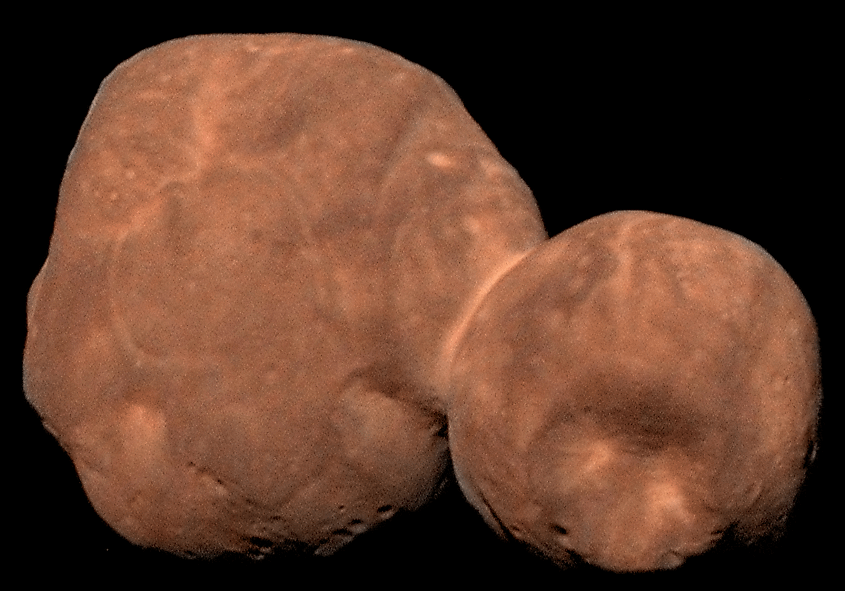
Exploring the Kuiper Belt is no easy task, given its distance from the Earth. Only one spacecraft has explored the Kuiper Belt, NASA's New Horizons spacecraft. New Horizons was launched in 2006 on a journey to the dwarf planet Pluto. Pluto itself is a KBO, and it became the first object within the Kuiper Belt to be visited by a spacecraft. After New Horizons' successful flyby of Pluto in 2015, it continued into the Kuiper Belt. In 2019, New Horizons encountered another KBO known as Arrokoth. To date, Pluto and Arrokoth are the only two KBOs to be visited by a spacecraft, yet New Horizons will likely encounter more as it drifts through the Kuiper Belt.
Kuiper Belt Fact Sheet
| Size | 1.9 billion miles (three billion kilometres) |
|---|---|
|
Mass |
Less than 1% of the Earth’s mass |
|
Temperature |
Minus 369 degrees Fahrenheit (minus 222 degrees Celsius) |
|
Distance from the sun |
2.8 billion to 4.7 billion miles (4.5 billion to 7.5 billion kilometres) |
|
Largest known object |
Pluto |
|
Composition |
Rock, methane, water, ammonia |
|
Discovery date |
Existence confirmed on August 30, 1992 |
|
Discovered by |
David Jewitt |











